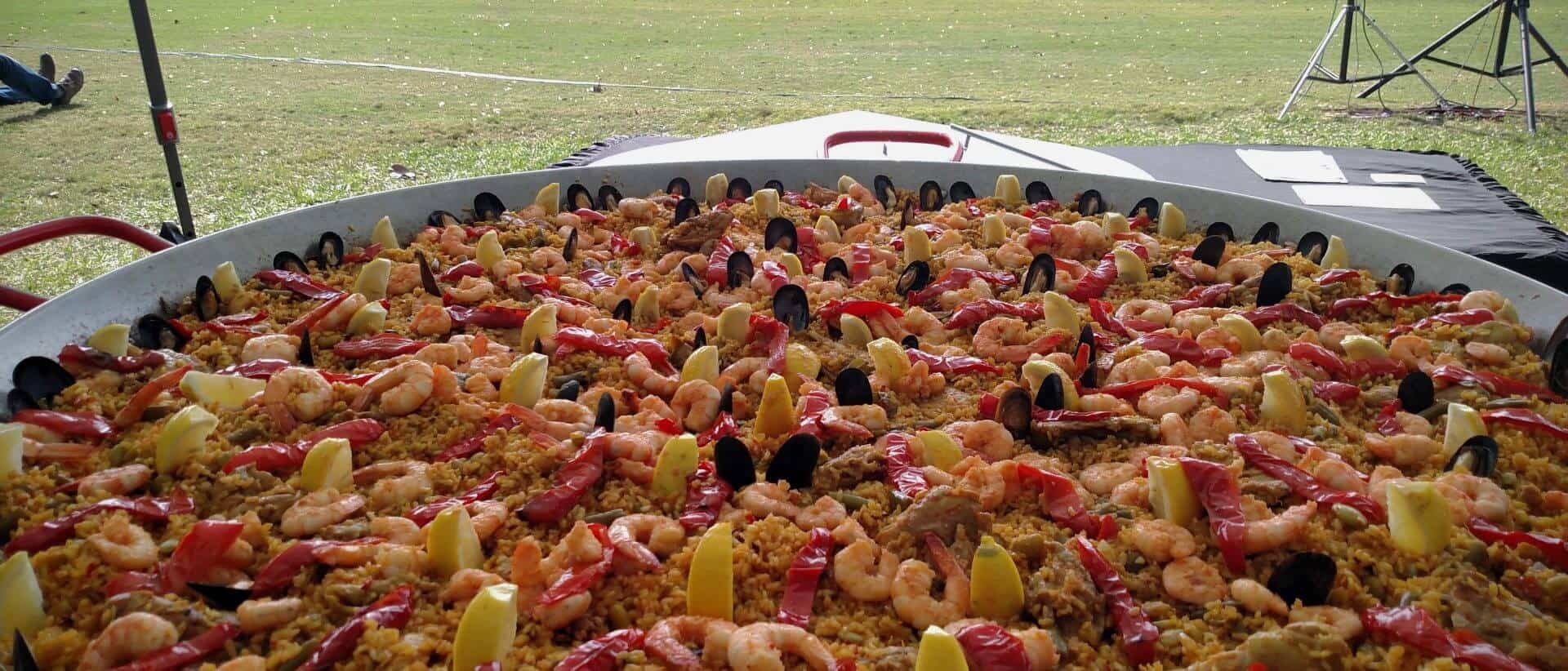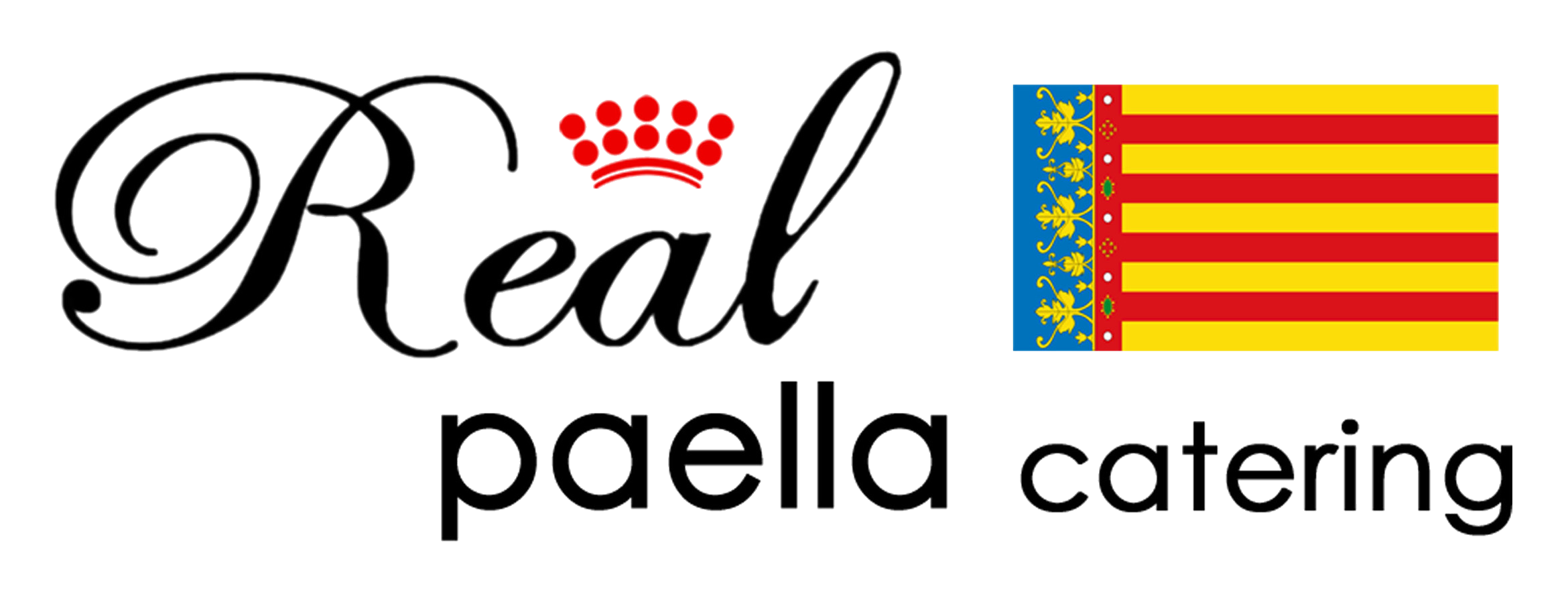(pronounced: “pah-EH-yuh”)

A saffron-flavored Spanish dish made with varying combinations of rice, vegetables, meat, chicken, or seafood traditionally eaten on Sunday.
Initially the consumption of rice in Valencia was limited to its use in the form of flour or semolina. In the XVIth century, baked rice in a clay pot was already consumed in Valencia, by the XVIIIth century, there is already documentation of the dish known as paella.
“La Paella” is the cooking utensil, traditionally and preferably made of iron. The pan is circular and shallow with two round handles on opposite sides with a flat base of a good thickness.
A papal cook, Bartolomeo Scappi wrote “opera” in the XVIth century, a book of kitchen recipes in which several kitchen tools are drawn, including “padelle gives tota alte” (tall cake mould) and “padella ouasa” (frying pan with handle).
Linguists believe that the word paella comes from the name of the pan it is made in – the Latin term patella, a flat plate on which offerings were made to the Gods.
Everything seems to indicate that the padella or paella came to the peninsula between the XVIth and XVIIth centuries.
The Paella starts in the rural zones of Valencia. In this period of time the peasants and shepherds needed a meal that was easy to transport.
In its origins the ingredients of the Paella were, birds, rabbit or hare, available fresh vegetables, rice, saffron and olive oil. Everything was mixed in the Paella with water and was cooked slowly over fire made with orange trees and supported by a small iron tripod, called trébede. Once ready it was eaten in the same pan in which it was cooked.
The oldest recipe he has found for what we call paella today, dish, Catalan historian Jaume Fàbrega says, is in an early 18th century manuscript in the Episcopal Library in Barcelona, in which the anonymous compiler drew a distinction between arroz a la catalana and arros a la Valenciana, the former requiring more liquid–1 1/2 maitadellas, (about 3 cups, using the old Catalan measure) to the pound of rice, where arroz a la Valenciana calls for just 1 maitadella (about 2 cups), making a drier, more paella-like preparation than the sightly soupier Catalan version. By the late 19th century, arroz a la Valenciana, or paella, had already become a national dish.
There are not historical documents that indicate exactly the origin of the seafood paella.
The fact that rice came to the Spanish from the Moors is supported with linguistic evidence. The Spanish word for rice is ‘arroz’ which seems to come directly from the Arabic word for rice which is ‘al-ruzz’.
It is believed that the name “pepper” (and its variants) was given by Cristóbal Columbus, who, on having discovered it, named it this way confusing it with « black pepper, … … very strong, but not with the flavor of the Levant »; although the two plants are not related, the name remained. In contrast to other eatable plants from America, which took decades in being accepted by the Europeans, this one spread throughout the world after its arrival to Spain in 1493. Once this plant was acclimated, it was dried and ground to be used as a condiment and colorant.
Spaniards took the tomato to Europe in 1540, which grew easily in the Mediterranean climates.
PREPARATION (VALENCIAN PAELLA):
All ingredients MUST be fresh.
INGREDIENTS:
Short grain rice, Chicken, Rabbit, Bajoca (green wide beans), Garrofó (white wide beans), Tavella (white beans), Tomato, Olive oil, Saffron, Salt, Water. Optional ingredients: Snails, Red Peppers, Artichokes, Garlic, Smoked Paprika & Rosemary.
Cut the meat into pieces. Salt them. Cut the peppers into long pieces. Heat the oil in the paella pan. Brown the meat pieces and the peppers very slowly and thoroughly. Then, add the vegetables and brown them as well. Remove the peppers. Next, add the garlic, paprika and tomato (sofrito). Add water and salt. Boil for 10 minutes.
Add the saffron and rice, distributing it evenly over the surface of the paella pan. Add the peppers on top of the rice. Boil at high heat for 8 minutes. Then turn the heat down low and cook for 8-15 minutes more, in order to obtain the “socarrat” (the crispy bottom layers of rice).
The rice once added to the paella, must be left undisturbed. Otherwise, it will release starch and the grain will become sticky.
The paella is ready to be served after having cooled for several minutes.
Traditional paella has a crispy, caramelized, toasted bottom (called socarrat in Valencian) that is considered a delicacy.
There are two common types of paellas:

